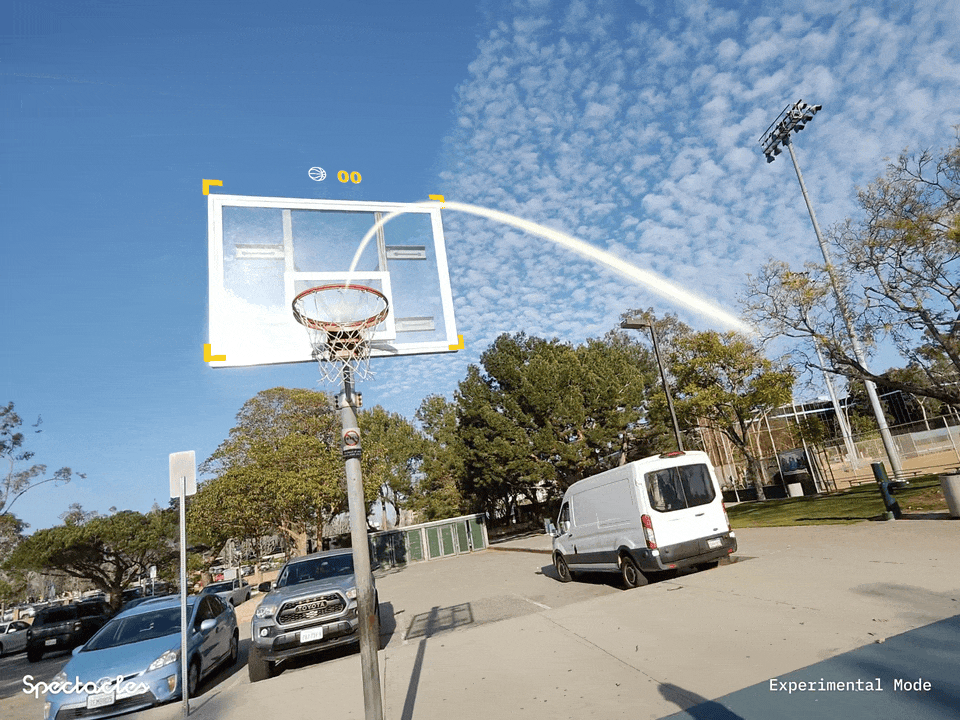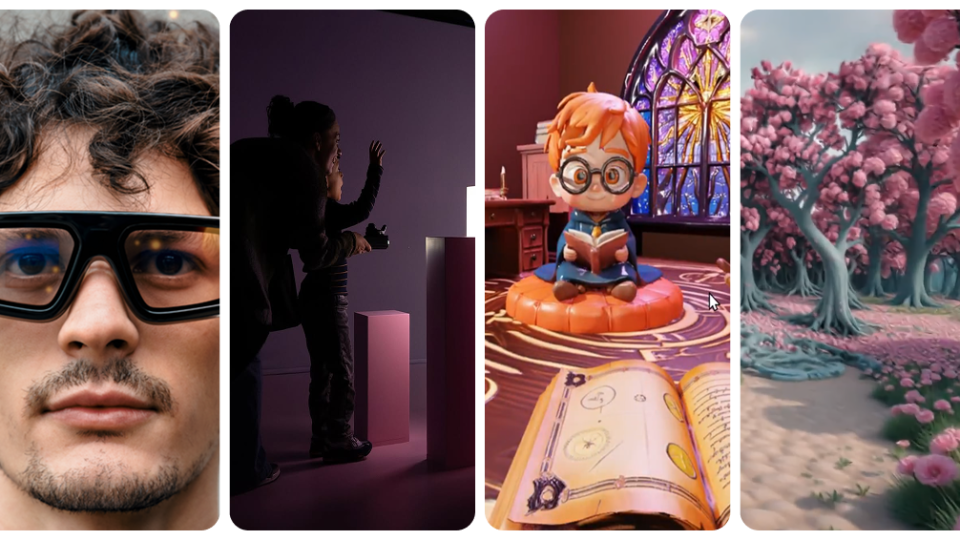March was huge with innovation—from GDC 2025 headlines to major breakthroughs in generative AI, XR design tools, and next-gen AR hardware. We could easily dedicate this entire report to the progress in AI alone, but we’ve focused on the tools that genuinely shift how brands and creative teams can prototype, tell stories, and engage audiences.
It’s no small task narrowing this down from over 100 updates, but here’s our take on the innovations that matter most this month—with our thoughts on why they’re relevant, what we like, and where we see immediate application.
🤖 AI-POWERED CREATIVE TOOLS
1 - Vibe Coding – Natural Language to Functional Assets
What’s New?
“Vibe coding” is the emerging term for tools that turn plain language into real, usable creative outputs—code, 3D models, UI elements and more.
Why It Matters?
It’s like having a developer or designer working with you in real time. This helps teams move faster in early stages of concepting, and opens up production to people who might not have technical backgrounds.
Where This is Useful:
Internal brainstorms or client co-creation
Quick mockups or visual ideas
Tools for brands to experiment without dev teams
🧱 TEXT-TO-3D & WORLD GENERATION
2 - Generate 3D Assets from Images + Prompts
What’s New?
The Tripo3D tool lets you upload an image, type a short description, and get a 3D object ready to use in Blender—no modelling experience required.
Why It Matters?
Great for quick experimentation. Whether you’re designing a space, building a virtual scene, or planning a product showcase, this takes hours off the process.
Where This is Useful:
Concept visuals for events and installs
Prototyping XR or game scenes
Quick visualisation for client sign-off
3 - Meta Reality Labs – Turn Any Photo Into a Walkable 3D Space
What’s New?
Meta has developed a way to turn a flat image into a full 3D scene you can move through, using AI to fill in missing details.
Why It Matters?
This unlocks quick previews of what a pop-up, space, or environment could feel like—without weeks of build time. It’s a huge time-saver for creative planning.
Where This is Useful:
Pre-vis for XR scenes
Immersive retail layouts or spatial mockups
Turning historical or concept imagery into walkthroughs
🧠 CONTEXTUAL & SPATIAL AI
4 - Spatial LM (Hugging Face) – An AI That Understands Space
What’s New?
This AI model can understand where objects are, how spaces are laid out, and what directions things face. Think of it like a spatially aware assistant.
Why It Matters?
Perfect for XR apps, spatial interfaces, or smart assistants. This lets AI actually “understand” the room—so it can guide users or respond to layout changes in real time.
Where This is Useful:
AR navigation or design previews
Interactive assistants in physical spaces
Smarter in-game characters and guides
🥽 XR & SPATIAL COMPUTING
5 - Samsung XR Headset (Project Moohan) – Android-Based, Open Platform
What’s New?
Samsung’s new XR headset runs on Android, unlike Apple’s closed system—making it more flexible for custom content.
Why It Matters?
This opens the door to more affordable, brand-friendly XR builds without being locked into Apple’s ecosystem. Ideal for multi-platform activations and custom apps.
Where This is Useful:
XR content with backend flexibility
Event activations needing unique deployment
Custom enterprise applications
Video by Ben Geskin
6 - Custom VR Immersion Rigs – Physical Add-ons for VR
What’s New?
We’re seeing home-built rigs that simulate real physical motion—like skydiving or movement-based haptics—to work alongside consumer headsets like Meta Quest.
Why It Matters?
These setups offer inspiration for adding physical interaction to brand experiences—turning a standard VR moment into something unforgettable.
Where This is Useful:
Location-based brand experiences
Training simulations with physical realism
VR arcades or festival installations
Video by SkyAmirV
7 - Snap Spectacles (5th Gen) – Location-Based AR + Hand Tracking
What’s New?
The latest Spectacles update includes GPS-powered AR, better hand gesture controls, and interactive features like built-in scoring or AR keyboards.
Why It Matters?
This pushes AR wearables from novelty to real-world use. Brands can now create hands-free, location-specific experiences that guide users or reward participation—no phone screen needed.
Where This is Useful:
On-site AR treasure hunts or tours
Brand gamification with leaderboard systems
Immersive AR without friction at events

🎮 INTERACTIVE EXPERIENCES
8 - Roblox Egg Hunt – Multi-World Digital Quest
What’s new?
Roblox launched a massive “egg hunt” community event with a $1 million prize pool, themed around Ready Player One-style virtual quests across multiple game worlds.
Why it matters?
This event showcases the evolving sophistication of platform-wide virtual events and the power of shared goals in driving engagement. With its substantial prize pool and cross-world gameplay, Roblox demonstrates how virtual platforms can create cultural moments that rival physical events in scale and excitement. For brands, this approach offers a blueprint for creating meaningful digital activations that leverage existing online communities rather than building destinations from scratch.
The cross-world nature of the event is particularly noteworthy—by integrating challenges across different experiences, Roblox created a cohesive narrative that encouraged exploration while maintaining consistent engagement mechanics. This strategy could translate well to multi-location retail activations or cross-brand partnership campaigns.
Where this is useful:
- Virtual event design and cross-platform brand activations
- Gamified loyalty programs with compelling reward structures
- Community building through shared challenges and goals

9 - Shadow Art by Joon Moon – Shadows as Interfaces
What’s New?
Visitors’ shadows interact with digital content in a projection-mapped installation—no screens, no learning curve.
Why It Matters?
It’s instantly engaging, especially in public or family-friendly spaces. It’s one of the most natural interaction types we’ve seen—intuitive and joyful.
Where This is Useful:
Public or cultural activations
Museums and galleries
Interactive storytelling spaces
Video Credit: Joon Moon
🎭 IMMERSIVE STORYTELLING & WEARABLE TECH
10 - Biotron – Turn Object into Proximity sensors
What’s New?
Biotron is a new device which allows you to turn any conductive object into an interactive sensor. Using a similar tech to touch screens but much more sensitive, in fact you don’t even need to touch the objects for them to detect you.
By combining dynamic lighting, reactive sound design, and physical structures into one cohesive system. The experience adapts to users in real time—responding to proximity, or movement—creating a layered, immersive environment that feels alive.
Why It Matters?
Using the physical environment as the interactive interface expands the possibilities when creating engaging experienced. More importantly, it puts interaction at the centre, letting brands tell stories proximity, touch and ambience—not screens or menus.
Where This is Useful:
Adding interactivity to surprising objects.
- Works as a plug-and-play MIDI device.
Interactive spaces that blend digital and physical elements
11 - ElevenLabs x Dalí Museum – Voice AI in Culture
What’s New?
Visitors to the Dalí Museum can talk into a surreal “lobster phone” and hear replies in Dalí’s voice, generated by AI.
Why It Matters?
It’s weird, respectful, and personal—a great example of voice AI adding atmosphere. The same technique could easily power brand mascots or founder personas in spaces.
Where This is Useful:
Voice-driven museum or brand guides
Historical or character storytelling
Personalised brand moments at scale
Curious about what’s possible? From interactive experiences to AI-driven content creation, new technology is opening up fresh opportunities for engagement. Whether you’re looking to experiment or build something groundbreaking, we’d love to explore ideas with you.




